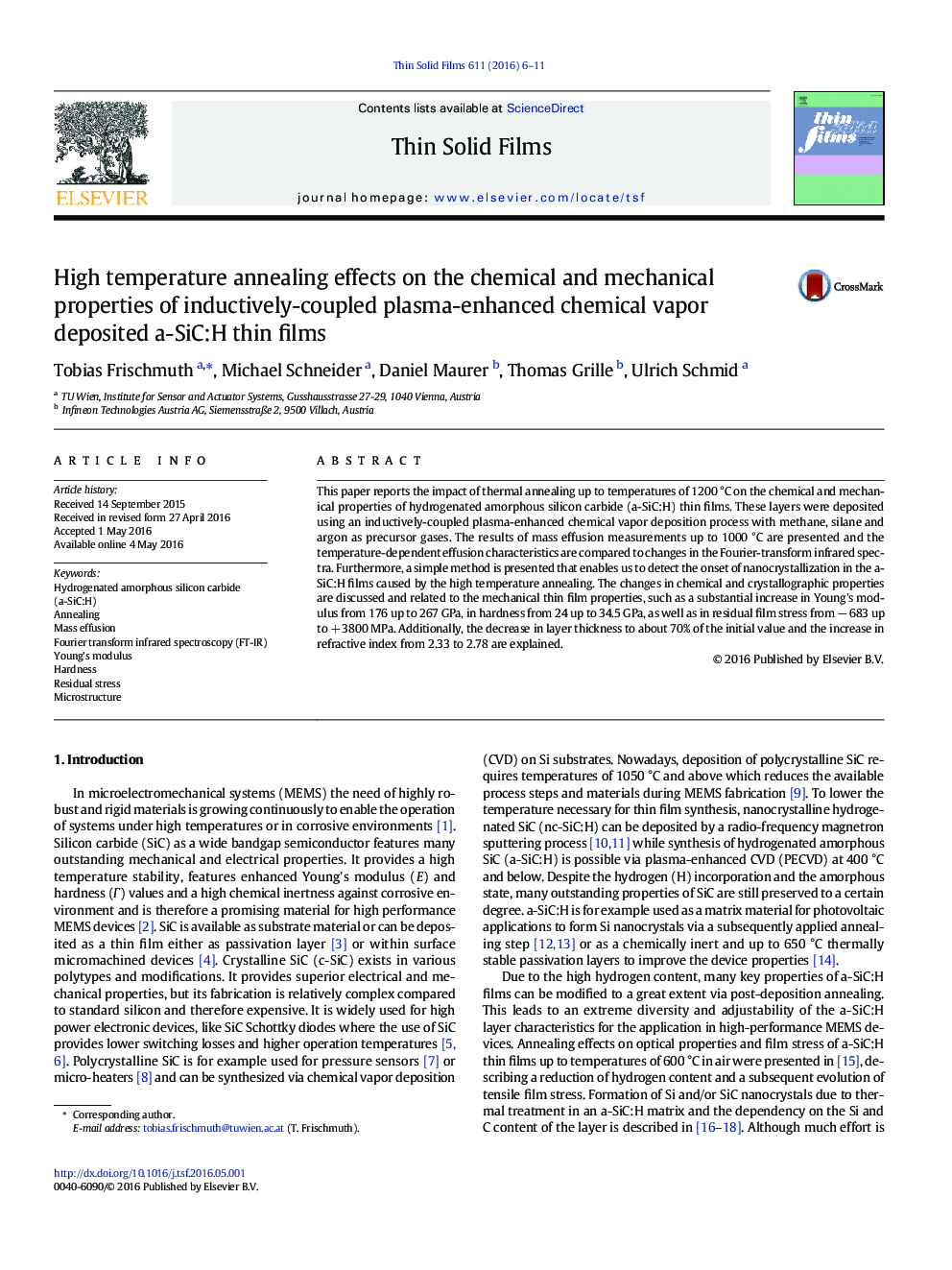| Article ID | Journal | Published Year | Pages | File Type |
|---|---|---|---|---|
| 1663969 | Thin Solid Films | 2016 | 6 Pages |
Abstract
This paper reports the impact of thermal annealing up to temperatures of 1200 °C on the chemical and mechanical properties of hydrogenated amorphous silicon carbide (a-SiC:H) thin films. These layers were deposited using an inductively-coupled plasma-enhanced chemical vapor deposition process with methane, silane and argon as precursor gases. The results of mass effusion measurements up to 1000 °C are presented and the temperature-dependent effusion characteristics are compared to changes in the Fourier-transform infrared spectra. Furthermore, a simple method is presented that enables us to detect the onset of nanocrystallization in the a-SiC:H films caused by the high temperature annealing. The changes in chemical and crystallographic properties are discussed and related to the mechanical thin film properties, such as a substantial increase in Young's modulus from 176 up to 267 GPa, in hardness from 24 up to 34.5 GPa, as well as in residual film stress from â 683 up to + 3800 MPa. Additionally, the decrease in layer thickness to about 70% of the initial value and the increase in refractive index from 2.33 to 2.78 are explained.
Keywords
Related Topics
Physical Sciences and Engineering
Materials Science
Nanotechnology
Authors
Tobias Frischmuth, Michael Schneider, Daniel Maurer, Thomas Grille, Ulrich Schmid,
